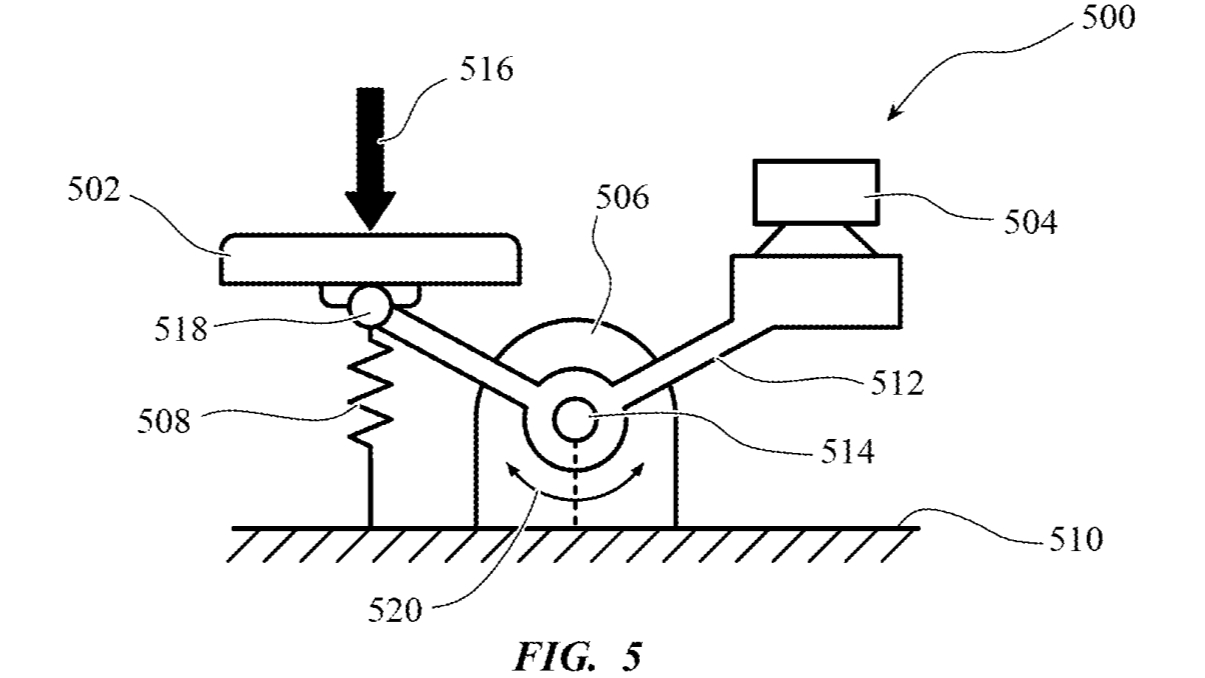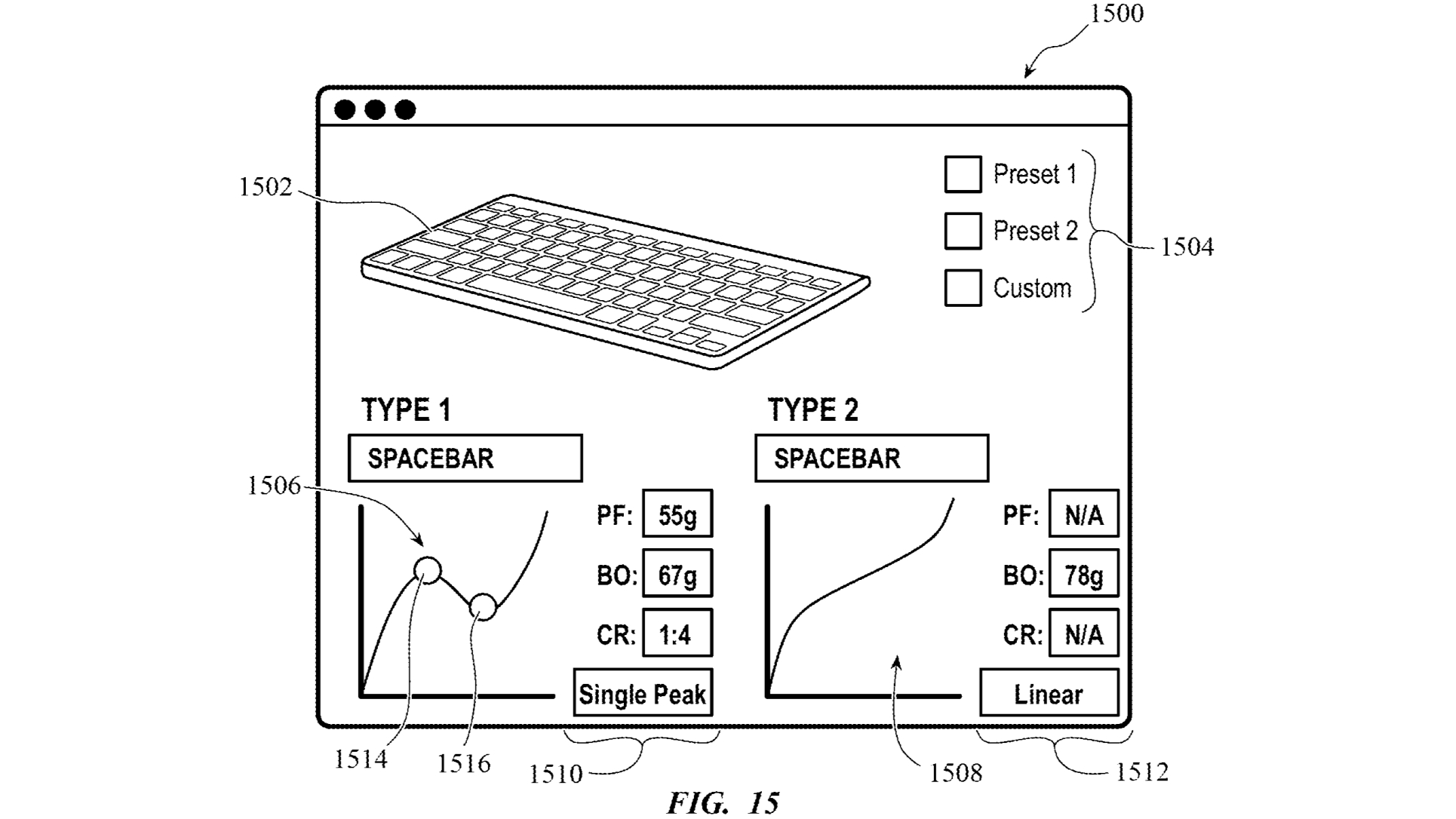
A new Apple patent filed this week has revealed the company is studying a new MacBook keyboard that could provide adjustable feedback to users, letting them vary the tactile force and the audible feedback of each key depending on how hard you press it, customization, and other factors.
If that sounds a lot like a mechanical keyboard for Mac then you’re quite right. A new patent filed by Apple this week titled “keyboard with adjustable feedback” notes a new method “for controlling feedback provided by key mechanisms of a keyboard or by a similar input device”, specifically “a keyboard system with adjustable and variable feedback.” The embedded images reveal a MacBook keyboard in the first instance, but there’s no reason to believe this couldn’t also be applied to Apple’s desktop Mac keyboards as well.
In the patent, Apple notes that the current state of mechanical keyboard testing and prototyping “can be excessively expensive and slow” and that experimenting with new tech or force feedback profiles for key switches requires building entire prototype keyboards, essentially trial and error. What’s more, a keyboard that feels “comfortable and satisfying” to one user “can be deemed completely inadequate in feel to another.” So making keyboards is expensive, and everyone has different tastes. Fortunately, Apple might have a solution.
The patent

Apple has patented a keyboard that includes the standard key mechanism and keycap of any great mechanical keyboard. However, it also includes an encoder to transduce the position of the keycap and an actuator “to apply an output force to the keycap,” much like haptic feedback on an iPhone or MacBook trackpad.
The actuator’s force can be adjusted in a variety of different ways. For instance,, it can be programmed to deliver different feedback depending on how hard you press a key, or where the key is placed on the keyboard. Theoretically, for instance, you could set your W, A, S, D, keys to provide unique feedback in the style of a gaming keyboard. The patent shows macOS interface images that let you adjust the force feedback profile of each key and shows how users could have presets and custom settings. Users would be able to change many factors including “feel, tactility, smoothness, roughness, sound, travel distance, perceived travel distance, and more.
This patent might never see the light of day, but Apple has successfully leveraged tactile and haptic feedback in many of its past and present devices. Notably, the iPhone SE’s solid-state Home Button and the haptic feedback of the MacBook trackpad, to name but two. If Apple did release a MacBook with an adjustable keyboard, it would almost definitely be the best MacBook ever made.








